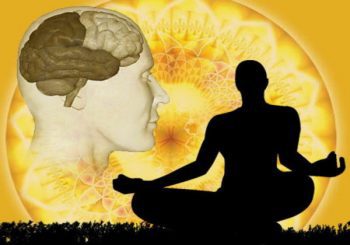Contributing writer for Wake Up World
With a history spanning thousands of years, yoga (in a wide variety of forms) has proven its benefits experientially across generations. Modern science is also confirming its usefulness for people seeking improved mental and physical health and fitness conditioning.
Like many (if not most) other forms of exercise, yoga, though mild in comparison, has also been shown to support healthy brain function and stave off neurological decline.
Considering the skyrocketing prevalence of dementia, this is good news, as yoga is suitable for most people, regardless of age or fitness level.1 Some forms can even be done seated in a chair. As explained in a 2019 review2,3 of Hatha yoga’s effects on the human brain:4
“Yoga combines physical postures, rhythmic breathing and meditative exercise to offer the practitioners a unique holistic mind-body experience. While the health benefits of physical exercise are well established, in recent years, the active attentional component of breathing and meditation practice has garnered interest among exercise neuroscientists.
As the scientific evidence for the physical and mental health benefits of yoga continues to grow, this article aims to summarize the current knowledge of yoga practice and its documented positive effects for brain structure and function, as assessed with MRI, fMRI, and SPECT …
Collectively, the studies demonstrate a positive effect of yoga practice on the structure and/or function of the hippocampus, amygdala, prefrontal cortex, cingulate cortex and brain networks including the default mode network (DMN).
The studies offer promising early evidence that behavioral interventions like yoga may hold promise to mitigate age-related and neurodegenerative declines …”
Psychologically, a regular yoga practice has also been shown to lower stress,5 reduce body image dissatisfaction6 and anxiety,7 and much more.
This in addition to a wide range of physical health benefits, including as weight loss,8 improved atrial fibrillation9 (irregular heartbeat), blood pressure10 and immune function,11 reduced risk for migraines12 and improved sexual performance and satisfaction,13,14 to name but a few.
Effects on Brain Aging and Cognition
As noted in the 2019 review15 published in the journal Brain Plasticity, through the use of modern imaging technology, researchers have been able to objectively confirm that yoga impacts the brain in beneficial ways that translate into improved attention, mental processing speed, executive function and emotional regulation.
Figure 3 in that paper illustrates the structural differences noted in yoga practitioners compared to non-practitioners, and the dose-dependent relationship between the duration of practice and subsequent changes in brain structure.
Overall, yoga practitioners have thicker cortexes and greater gray matter volume and density in several brain regions, including the frontal, limbic, temporal, occipital and cerebellar regions.16 The paper also cites research17 confirming that yoga appears to negate the otherwise normal decline in total gray matter volume that occurs with age:18
“Villemure and colleagues investigated whether the correlation of age with total GM [gray matter] volume of the whole brain differed between a group of yoga-practitioners and non-practitioners.
While within the group of healthy adults without yoga experience, a negative correlation was observed between age and the total GM volume of the brain, no relationship was found between age and brain structure within the group of yoga-practitioners.”
Interestingly, beneficial brain changes appear to occur fairly rapidly at higher “doses.” The Brain Plasticity review discusses intervention research showing increased volume in the hippocampus after just six months of hourlong sessions five days a week.19
According to the authors, it appears to be the unique combination of physical movement, breath work and meditation that Hatha yoga (in particular) offers that confers these beneficial brain benefits.
More specifically, it is the activation of your parasympathetic nervous system (the “rest and digest” part of your autonomic nervous system) that seems to play a deciding role. As noted in a 2015 paper on the neuroprotective effects of yoga:20
“Years of yoga experience correlated mostly with GM volume differences in the left hemisphere (insula, frontal operculum, and orbitofrontal cortex) suggesting that yoga tunes the brain toward a parasympathetically driven mode and positive states.”
Yoga Improves Communication Between Brain Regions
All of that said, since yoga is a holistic mind-body practice, the overall benefits cannot be ascribed to any one factor in isolation.
Using MRI brain scans capable of tracking how the different parts of your brain communicate with one another, a 2016 study21 in the Journal of Alzheimer’s disease found that older adults with mild cognitive impairment assigned to do one hour of Kundalini yoga per week and 15 minutes of Kirtan Kriya meditation per day for 12 weeks improved both their memory and mood scores, compared to controls enrolled in a memory-enhancement training (MET) program consisting of one hour of mental exercises per week.
Kundalini yoga involves chanting and visualization, and Kirtan Kriya meditation combines the chanting of mantras with fluid hand movements. Brain scans revealed that while both groups had increased communication between parts of the brain involved in memory and language, the yoga practitioners also improved communication in areas controlling focused attention.
In short, the combination of yoga and meditation actually exceeded conventional brain training in terms of efficacy, even though neither of these practices specifically involve mental exercise. As reported by the authors:22
“The yoga group demonstrated a statistically significant improvement in depression and visuospatial memory. We observed improved verbal memory performance correlated with increased connectivity between the DMN [default mode networks] and frontal medial cortex, pregenual anterior cingulate cortex, right middle frontal cortex, posterior cingulate cortex, and left lateral occipital cortex.
Improved verbal memory performance positively correlated with increased connectivity between the language processing network and the left inferior frontal gyrus.
Improved visuospatial memory performance correlated inversely with connectivity between the superior parietal network and the medial parietal cortex … Yoga may be as effective as MET in improving functional connectivity in relation to verbal memory performance.”
Other Ways in Which Yoga Benefits Your Brain
Over the years, a number of studies have homed in on the brain benefits of yoga. In addition to those already mentioned, studies have found that:
•Twenty minutes of Hatha yoga improves speed and accuracy of mental processing to a greater degree than 20 minutes of aerobic exercise (jogging).23 Potential mechanisms here include enhanced self-awareness and reduced stress.
•Yoga helps improve a variety of mental health problems, including psychiatric disorders like depression, anxiety, attention-deficit-hyperactivity disorder (ADHD), post-traumatic stress disorder (PTSD) and schizophrenia,24 in part by increasing brain chemicals like gamma amino-butyric acid (GABA).25
GABA is responsible for blocking nerve impulses, telling the adjoining nerve cells not to “fire” or send an impulse. Without GABA, your nerve cells fire frequently and easily, triggering anxiety disorders, seizures and conditions such as addiction, headache and cognitive impairments.26
Yoga also boosts serotonin, and some studies suggest yoga can have a similar effect to antidepressants.27 A 2017 study28 evaluated the effect of Iyengar yoga on adults diagnosed with major depressive disorder who were either not taking medication of had been on the same medication for three months.
Here, those participating in two or three 90-minute yoga classes plus a half-hour session at home three or four times a week for three months experienced a reduction in symptoms by at least 50%. Dr. Chris Streeter, study author and associate professor of psychiatry and neurology at Boston University School of Medicine, commented:
“While most pharmacologic treatment for depression target monoamine systems, such as serotonin, dopamine and norepinephrine, this intervention targets the parasympathetic and gamma aminobutyric acid system and provides a new avenue for treatment.”
•Yoga helps improve teenager’s emotional resilience and ability to manage anger. As yoga educator and writer Iona Smith told HuffPost:29
“During adolescence, the frontal lobes of the brain (the seat of language and reason) are still being formed, leaving teens to overly rely on their amygdala (the seat of emotions) … The brain’s malleability during adolescence marks a crucial stage in both cognitive and emotional development.
Luckily, researchers are now able to paint a clearer picture of some of the factors that allow students to thrive throughout high school and into adulthood, such as self-awareness, managing distressing emotions, empathy, and navigating relationships smoothly.
When students hone these skills, they are not only happier and healthier emotionally, but are also better able to focus on academics.”
•Yoga has also been shown to make a significant difference in depression of addicts going through rehabilitation,30 and has been shown to reduce anxiety and aggression among inmates.31
Which School of Yoga Is Right for You?
Considering the many physical and psychological benefits of yoga, it’s certainly worth considering, and since there are many schools (forms) of yoga to choose from, you’re virtually guaranteed to find one that’s suitable for your particular situation.
The emergence of trauma-sensitive yoga32 is a testament to this, and may offer a way forward for many victims of physical and/or psychological abuse. There’s even yoga for osteoporosis.33
You can find a quick outline of 11 major schools of yoga on MindBodyGreen.com.34 Additional variations can be explored on the Yoga Journal’s website.35 Here’s a quick summary of the most popular styles:
| Hatha yoga — Considered the most popular type of yoga taught in the U.S., hatha involves basic breath-controlled exercises and yoga postures that are great for beginners. |
| Ashtanga yoga — Ashtanga is a vigorous form of yoga that involves quick movements, with the aim of improving strength and endurance. |
| Bikram yoga — Bikram involves 26 patented poses, which are practiced in a room heated to 105 degrees Fahrenheit with a humidity of 40%. It’s aimed to help loosen muscles, cleanse the body and relieve symptoms of chronic diseases. |
| Hot yoga — Similar to bikram, hot yoga is also performed in a heated room. However, the room temperature and humidity for this yoga style is not defined. The routine may also be composed of varying poses. |
| Kundalini yoga — Kundalini emphasizes fast-paced flow of poses, proper breathing techniques and meditation to improve balance of the body. This form of yoga is more challenging than others, so it may not be suitable for beginners. |
| Vinyasa yoga — Vinyasa is adapted from the traditional ashtanga techniques, which means that it’s also an active form of yoga. The only difference between these two types is that vinyasa involves varying poses, while ashtanga sticks to a single routine. |
|
Core power yoga — Also known as power vinyasa, core power yoga is a strenuous routine that’s aimed to stretch, strengthen and tone the muscles while emphasizing mind-body connection. |
Article sources:
- 1, 15 Brain Plasticity 2019; 5(1): 105-122, Introduction
- 2 Brain Plasticity 2019; 5(1): 105-122
- 3 Neuroscience News December 12, 2019
- 4 Brain Plasticity 2019; 5(1): 105-122, Abstract
- 5 International Journal of Yoga July-December 2011; 4(2): 49-54
- 6 Psypost.org March 17, 2019
- 7 International Journal of Preventive Medicine 2018; 9: 21
- 8 Physiology and Behavior December 5, 2012: 107(5); 809-813
- 9 Journal of the American College of Cardiology March 19, 2013; 61(11): 1177-1182
- 10 Journal of Alternative and Complementary Medicine 2014 Apr;20(4):241-50
- 11 PLOS One April 2013:17;8(4):e61910
- 12 Headache May 2007;47(5):654-61
- 13 Journal of Sexual Medicine October 2010;7(10):3460-6
- 14 Journal of Sexual Medicine February 2010;7(2 Pt 2):964-70.
- 16 Brain Plasticity 2019; 5(1): 105-122, Dose-response relationships
- 17, 20 Frontiers in Integrative Neuroscience 2015; 9: 281
- 18 Brain Plasticity 2019; 5(1): 105-122, Cross-sectional studies examining group differences
- 19 Brain Plasticity 2019; 5(1): 105-122, Intervention studies examining yoga training effects
- 21, 22 Journal of Alzheimer’s Disease 2016 Apr 5;52(2):673-84
- 23 Journal of Physical Activity and Health, Acute Effects of Yoga on Executive Function
- 24 Frontiers in Psychiatry, 25 January 2013 DOI: 10.3389/fpsyt.2012.00117
- 25 Huffington Post January 7, 2013
- 26 University Health News Daily April 9, 2019
- 27 Frontiers in Psychiatry, 25 January 2013 [Epub ahead of print]
- 28 Journal of Alternative and Complementary Medicine February 2017; 23(3)
- 29 HuffPost February 2, 2013
- 30 Procedia – Social and Behavioral Sciences 2011; 30: 1394
- 31 Scientific American March 1, 2014
- 32 The Center on Poverty and Inequality, The Art of Yoga Project, April 2017, Gender & Trauma, Somatic Interventions for Girls in Juvenile Justice
- 33 Sciatica.org, A Dozen Poses vs. Osteoporosis
- 34 Mindbodygreen.com, 11 Styles of Yoga
- 35 Yoga Journal, Explore the Types of Yoga
Originally published at mercola.com and reproduced here with permission.
Recommended articles by Dr. Joseph Mercola:
- High Blood Pressure Linked to Increased Risk of Dementia
- Cholesterol Does Not Cause Heart Disease
- CBD Has Unique Ability to Cross Blood-Brain Barrier
- Water and Homeopathy: Latest Discoveries at Science’s Cutting Edge
- Sugar Substitutes: What’s Safe and What’s Not
- Unveiling the Depths of the Human Psyche: Psychedelics May Unlock Parts of the Mind That Are Normally Inaccessible
- What Should Your Poop Look Like?
- The Endocannabinoid System and the Important Role it Plays in Human Health
- Magic Mushrooms May Hold Key to Long-Term Relief from Anxiety and Depression
- Scientific Links Between Processed Foods and Depression
About the author:
Born and raised in the inner city of Chicago, IL, Dr. Joseph Mercola is an osteopathic physician trained in both traditional and natural medicine. Board-certified in family medicine, Dr. Mercola served as the chairman of the family medicine department at St. Alexius Medical Center for five years, and in 2012 was granted fellowship status by the American College of Nutrition (ACN).
While in practice in the late 80s, Dr. Mercola realized the drugs he was prescribing to chronically ill patients were not working. By the early 90s, he began exploring the world of natural medicine, and soon changed the way he practiced medicine.
In 1997 Dr. Mercola founded Mercola.com, which is now routinely among the top 10 health sites on the internet. His passion is to transform the traditional medical paradigm in the United States. “The existing medical establishment is responsible for killing and permanently injuring millions of Americans… You want practical health solutions without the hype, and that’s what I offer.”
Visit Mercola.com for more information, or read Dr. Mercola’s full bio and resumé here.

If you've found value in our articles, we invite you to support the release of our brand-new book, "Gratitude Practices for Kids: A Practical Guide for Adults to Instill a Spirit of Appreciation and Positivity in the Next Generation."
"Gratitude Practices for Kids" brings together over 25 innovative and accessible practices designed to enhance gratitude in everyday life. This comprehensive guide is backed by 17 scientific studies, ensuring each concept is grounded in research, underscoring our commitment to nurturing growth, emotional intelligence, and positive interactions between adults and children.
We encourage you to opt for the paperback version to celebrate this new release. Dive into its fresh pages away from digital distractions, allowing you to immerse yourself in the transformative practices it offers.
Over recent years, Wake Up World has faced significant online censorship, which has impacted our financial ability to operate. Moving into book publishing represents a strategic step to secure the ongoing funds needed to continue our mission. By purchasing Gratitude for Kids, you help us keep our content free and accessible to everyone, avoiding needing a paywall. With over 8,500 articles published in the last 13 years, we remain dedicated to keeping our valuable content open to all.









